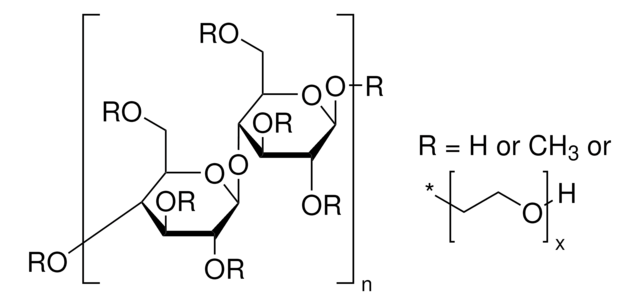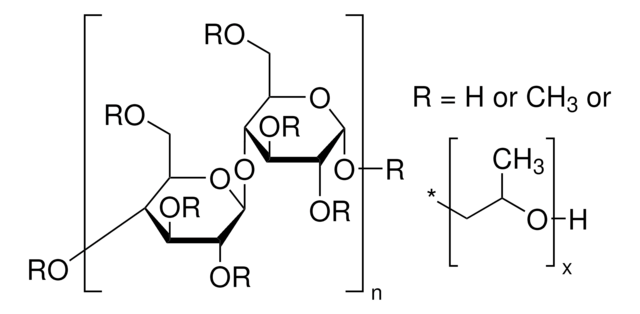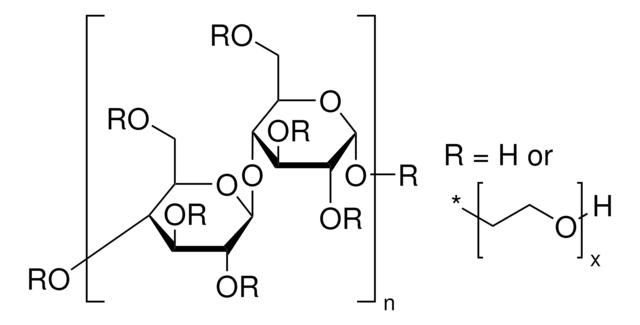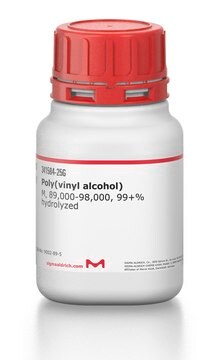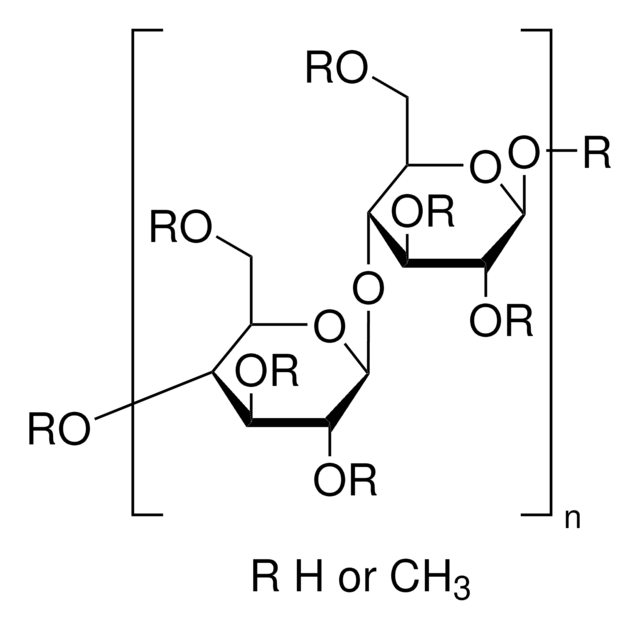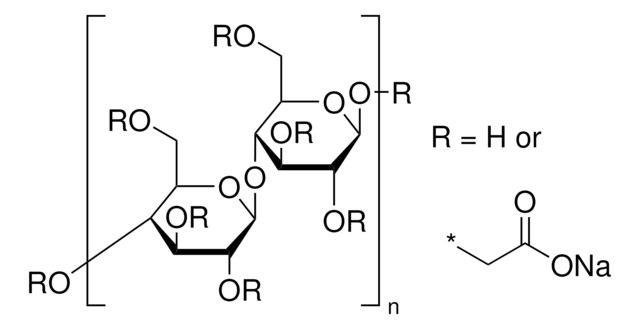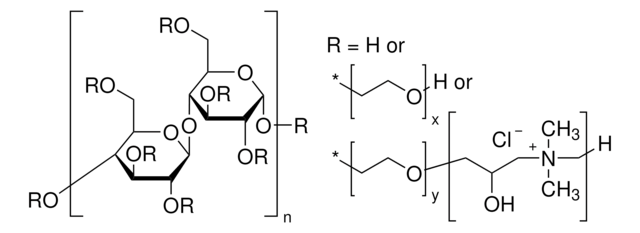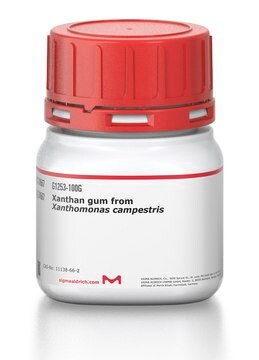93800
Tylose® MH 300
viscosity 150-450 mPa.s, 2 % in H2O(20 °C)
Sinônimo(s):
Methyl 2-hydroxyethyl cellulose
Faça loginpara ver os preços organizacionais e de contrato
About This Item
Produtos recomendados
Formulário
powder
Nível de qualidade
cor
white to faint beige
viscosidade
150-450 mPa.s, 2 % in H2O(20 °C)
temperatura de transição
flocculation range 60-90 °C (0.5 wt. %)
solubilidade
H2O: soluble 20 mg/mL
Procurando produtos similares? Visita Guia de comparação de produtos
Aplicação
Tylose® MH 300 and Tylose® MH 1000, methyl-hydroxyethyl cellose ethers (MHEC), are water-soluble non-ionic polymers used in materials to provide water retention, binding, thickening, film forming and colloid properties.
Outras notas
To gain a comprehensive understanding of our extensive range of Polysaccharides for your research, we encourage you to visit our Carbohydrates Category page.
Informações legais
Tylose is a registered trademark of SE Tylose GmbH & Co. KG
Código de classe de armazenamento
11 - Combustible Solids
Classe de risco de água (WGK)
WGK 1
Ponto de fulgor (°F)
Not applicable
Ponto de fulgor (°C)
Not applicable
Equipamento de proteção individual
Eyeshields, Gloves, type N95 (US)
Escolha uma das versões mais recentes:
Já possui este produto?
Encontre a documentação dos produtos que você adquiriu recentemente na biblioteca de documentos.
Os clientes também visualizaram
Roland Adden et al.
Analytical chemistry, 78(4), 1146-1157 (2006-02-16)
Hydroxyethylmethyl celluloses (HEMC, DS(Me) 1.46-1.66, DS(HE) = 0.14-0.17) have been analyzed with respect to their methyl and hydroxyethyl pattern in the glucosyl units and along the polymer chain. Methyl groups were located by GLC/MS after direct hydrolysis, reduction, and acetylation
Su Jeong Ban et al.
Food and chemical toxicology : an international journal published for the British Industrial Biological Research Association, 50(5), 1716-1721 (2012-03-06)
The effect of hydroxyethyl methylcellulose (HEMC) with different viscosities on the glucose metabolism and antioxidative defense system in high fat-fed mice was investigated. The mice were randomly divided into five dietary groups: normal control diet (NC), high fat diet (HF)
Su Jeong Ban et al.
Food and chemical toxicology : an international journal published for the British Industrial Biological Research Association, 50(2), 130-134 (2011-11-01)
The effect of hydroxyethyl methylcellulose (HEMC), in comparison with hydroxypropyl methylcellulose (HPMC), on the body weight and lipid metabolism in mice fed with high fat diet was investigated. The animals were given normal control diet (NC group), high fat diet
S Zuleger et al.
International journal of pharmaceutics, 217(1-2), 139-152 (2001-04-09)
The present study deals with controlled drug delivery from hydrocolloid tablets by polymer particle erosion. The influence of excipients and formulation factors on the dissolution behaviour of the methyl hydroxyethyl cellulose (MHEC)-tablets is investigated. Linear drug release with low susceptibility
M G Lee
Journal of clinical and hospital pharmacy, 7(1), 67-70 (1982-03-01)
A method is reported for the analysis of prostaglandin PGE2 in methylhydroxyethylcellulose gel. Stability studies using the method have shown that the degradation of PGE in the gel is a first order process at 4 degrees and 25 degrees C.
Nossa equipe de cientistas tem experiência em todas as áreas de pesquisa, incluindo Life Sciences, ciência de materiais, síntese química, cromatografia, química analítica e muitas outras.
Entre em contato com a assistência técnica